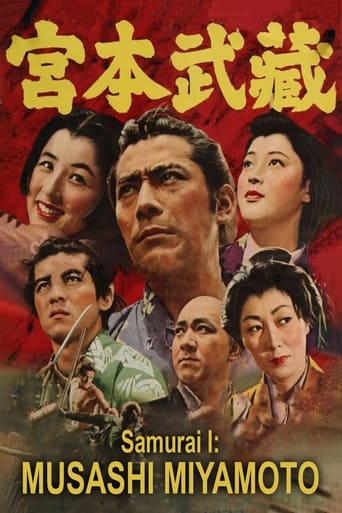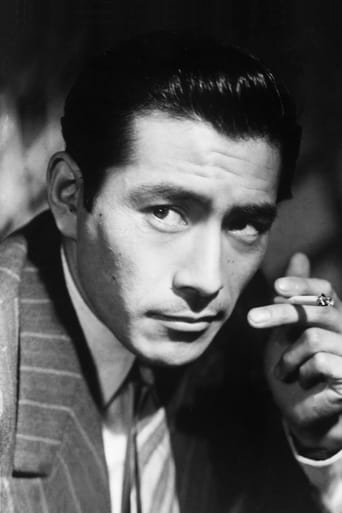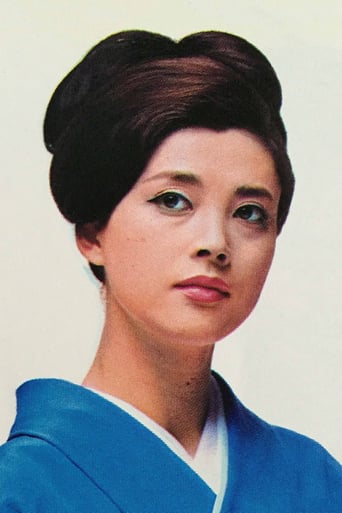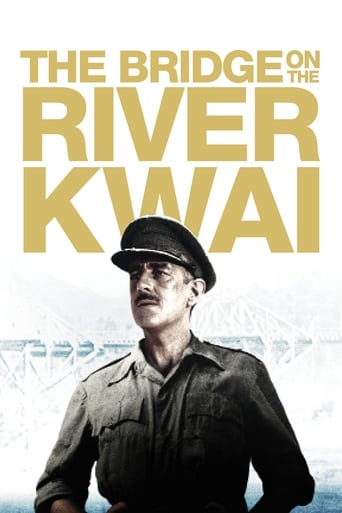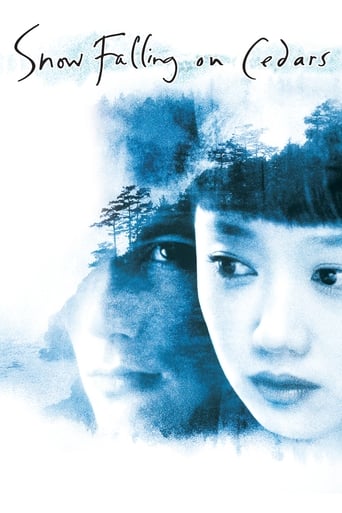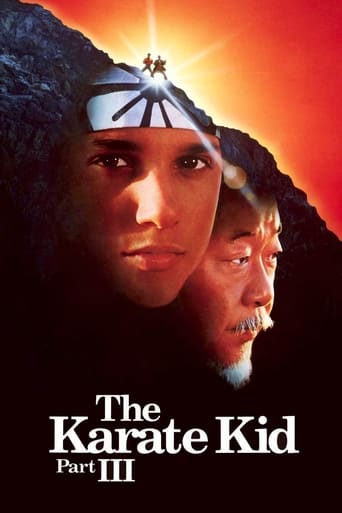Samurai I: Musashi Miyamoto (1954)
Struggling to elevate himself from his low caste in 17th century Japan, Miyamoto trains to become a mighty samurai warrior.
Watch Trailer
Free Trial Channels
Cast


Similar titles
Reviews
recommended
Did you people see the same film I saw?
Absolutely amazing
This is a must-see and one of the best documentaries - and films - of this year.
The story is only beginning in this first film in the Musashi Miyamoto trilogy. Many different conflicts are foreshadowed, this is along classic giri-ninjo lines typical in Japanese jidaigeki, duty versus feeling. Parallel selves being set up, the payoff perhaps for later—two loving girls, two manipulating mothers, resolute Musashi and the contrast in his weak- willed village friend. It roughly begins from the Battle of Sekigahara.So there is not much yet to say, the film is more like the opening act of an epic film than something you may evaluate of itself, it ends just as Musashi embarks on his journey of swordsmanship. Seeing just this, you're left with an open-ended sketch, groundwork. What sketch though! This first film does not show that it mines in a cinematic way Musashi's own rich ideas about the 'Way', but that may be because he is not yet really 'Musashi'. I hope to find more in tandem in futureinstalments.But for now?It's well worth seeing, imagine a classic Hollywood western but instead of Monument Valley, a compendium of sorts of Japanese visual poetry in lush Eastmancolor. Waterfalls, bridges, cherry- blossomed branches against majestic pagodas—all of them emblematic of medieval Japan. Romantic and painterly, as samurai of the time regarded their art of bushido. (though seldom adhered to it)---I plan to watch and write about all three films, lacing each comment with a few notes on the overall context. Some historic groundwork here. The Battle of Sekigahara signalled the end of a long warring period and the beginning of the last Japanese shogunate. Whether or not postwar Japanese audiences consciously identified with the situation, Sekigahara followed the failed attempt to create an Empire over Korea and Ming China, the next such attempt would be undertaken in the 1900's starting with another annexation of Korea and cover much of the same ground as originally coveted, including Manchuria. So the timeline covered in the three films is in essence a postwar period.The outcome of the battle was largely decided by loss of the war and a depletion of troops in Western Japan over the Korean campaign. At Sekigahara, Musashi fought on the losing Western side. Contrary to what is shown in the film, he was a teenager at the time and had already fought duels. It was the leader of the losing Toyotomi fraction that had a few years prior solidified the samurai as a heritable caste.It was at around this time that Rikyu perfects practiced asymmetry in the tea ceremony—Rikyu was tea master of the Toyotomis, eventually forced into seppuku in the years leading to Sekigahara. The ensuing Edo period would more broadly see, forged in relative seclusion, the crystallization of a Japanese identity of which Musashi is among its most emblematic figures. During this time, we have the consolidation of many practices—previously introduced from China—from the tea ceremony to calligraphy and landscape painting, frequently used as diversions by the samurai. Musashi incorporated many in his own practice.So what you see in the film is visually this amalgamation of identity, wonderfully so. It isn't refined beyond appearances, neither were the samurai. This is mingled with a lot of western stuff starting with the score, a rousing piece that reminded me of Morricone.A core principle of this identity is of course bushido, the 'way of the warrior'. It would be exploited in time in the second run for an Empire, with disastrous consequences. However, unlike most warrior lore of the time that simple-mindedly exalted a devoted death, Musashi wrote about more layered stuff. Referred to as strategy in his Book of Five Rings, it is much more, cinematic for our purposes. But more on that later.
I've finally gotten down to the first in the trilogy of films based on a story that has been touted as the Japanese's equivalent of Gone with the Wind. The Samurai Trilogy, directed by Hiroshi Inagaki, is based on the novel by Eiji Yoshikawa, which tells of the story of the famous samurai Miyamoto Musashi, and an intriguing character who has authored The Book of Five Rings.What more, the titular character is played by the legendary Toshiro Mifune, and that itself is a major treat and a draw for more contemporary audiences. Sadly to say, as with most first films in a series, this one sets out to establish the baseline character of Mushashi, or Takezo as he's better known in his early days, an orphan brought up by relatives and who possesses great strength, but is brash and ill-disciplined. Together with his best friend Honiden Matahachi (Rentaro Mikuni), who had to leave behind his fiancé Otsu (Kaoru Yachigusa), they sign up for war in the hopes of being samurai warriors at the end of battle, only to discover they're fighting on the losing end, and become fugitives.What transpires later involves their flight from the dark, a couple of seduction scenes by a mother-daughter pair of grave-diggers whose fancies for Takezo gets turned toward Honiden, therein splitting the two best friends up, and Takezo being persecuted by his village folk for deserting his best friend since he returned to the village as the sole survivor. But the shrewd monk Takuan (Kuroemon Onoe) sees a diamond in the rough in Takezo, and therefore sets him up to fall under his tutelage, while at the same time Takezo has to decide for himself how to deal with some new found love in Otsu.There's romance, there's battle scenes, there's the obligatory hero who's still unsure of his destiny. By the time the film ends, it leaves you with a lot of subplots still hanging in the air, but I'm crossing my fingers that all these will be addressed in the next two installments. It's a mid 50s film, so fight scenes aren't that polished to perfection. Instead we see Takezo's rather rough and unfanciful swordplay, in part being the gruff character that he is, knowing no finesse in the art of a duel, and also being a foil for realism, where enemies get cut down ruthlessly without wasting time. Technically one should pass over some of the shortcomings such as abrupt camera angle changes, cuts and edits, and it's indeed a pity that the film is not presented in a widescreen format, which would have been quite a spectacle given the vast landscapes that the film was shot in.Perhaps another indication of how dated this period drama is, is in the treatment of the women characters. I guess given socio-unequalness then, the women folk are seen to be terribly in need of a manly figure to be head of their household, and more than willing to be submissive, and obedient, just so to be at the side of their men. It's a far cry from today's world really, where women are far from the weaker sex they are portrayed in the film. Sure a key female character here is as conniving can be, and future installments (I've taken a look at the cast list) seem to demonstrate that there's still more to it all than meets the eye.In short, Samurai I has set the stage, transforming Takezo from nobody, to a ready warrior yet to be tested in the real world. As he sets out for some reality based education, it would prove all the more interesting as he is likely to chance upon old friends and foes, and this time, being skilled and more refined in his ways, would prove to be engaging material for the subsequent films to deal with. Already those two film titles have "Duels" in them, so they should fill for a climatic finale battle each, given the obvious lack of a crescendo this one turned out to be.
One can watch this film and learn a lot. The philosophy woven throughout, mainly by the Priest Takuan (Kuroemon Onoe), about what it means to be a man and honor your family (community) is the hidden jewel of this film.Takezo (Toshirô Mifune) represents all the rebellious youth that only think of themselves. He cares nothing for the damage he does. To the entire village, he is a dangerous animal. But, the Priest finds that he is worthy of rehabilitation and proceeds to make him into a Samurai warrior in service to the castle.This is a slow and thoughtful film, full of swordplay for those looking for that, but it is so much more for those who take the time to discover it.Kaoru Yachigusa plays Otsu, who is abandoned by her fiancé (Rentaro Mikuni) and falls in love with Takezo. Unfortunately, his training, after she waits for him for three years, has only begun as he begins a journey across Japan to get in touch with the people.I can't wait to see the next installment of this trilogy, which is cinematically brilliant, as one would expect from a Criterion disk, and features outstanding acting from all concerned.
This movie doesn't take much brainpower, but is a fine tale about two friends who leave their village in a quest for glory. Its set in feudal age Japan and the scenery is beautiful! Mountains, green pastures, lakes, forests with bamboo undergrowth and the cities and villages in typical style serves as the backdrop.Takezo (Mifune) is the strong and wild character all the woman likes, but he cant handle the attention very well so he keeps running. All the characters as well as the story is not hard to get, so this is one to bring in the kids on.Will defo check the rest of the series out, maybe the books as well.

